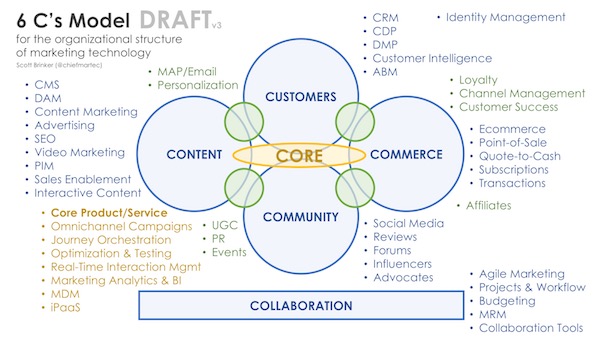The marketing technology landscape is big, broad, and deep. (Feel free to mentally insert other, more colorful, adjectives.) So many different kinds of solutions fall under that umbrella, and they don’t always fit into nice, neat categories.
This contributes to the confusion that many marketers feel around martech. It’s generally not clear what the taxonomy of the solution space is, which makes it difficult to break it down into smaller, more manageable chunks of capabilities. It’s fascinating to see how the marketers who submitted their marketing stacks to The Stackies have thought about this.
I think a good taxonomy isn’t just about vendor attributes, but also helps illuminate where different solutions fit in a marketer’s organization, the kinds of capabilities they enable, and the shared DNA in the practices that evolve around them.
It can’t be too complex, or it offers no real help to bringing order to the chaos. But it can’t be oversimple either, or it has no organizational power.
And, if it’s not asking too much, it would be nice if it had a catchy name.
Have wrestled with this challenge for 7 years, I’ve sketched dozens ideas in a notebook. Almost all of them have been crap. But there’s one that I’ve been chewing on for the past year that seems promising, so I thought I’d finally share a draft of it — The 6 C’s Model for Organizing Marketing Technology shown above.
It organizes marketing technologies into 6 domains that just happen to all start with the letter C (which was a wonderful stroke of serendipity, I swear):
- Customers — all the data about customers/prosects in our universe
- Content — all the content we produce and distribute in all channels
- Community — interactions with customers as a group, e.g., social media
- Commerce — capabilities to directly sell our products and services
- CORE — our product/service and campaigns/data that cross all of marketing
- Collaboration — the tools we use for collaborating inside marketing
I’ve mapped common “categories” of martech products (e.g., the alphabet soup of CMS, DAM, CRM, CDP, ABM, MDM, SEO, etc.) into these six domains to illustrate how I see these as clusters of related technologies. But it’s important to emphasize that what really gives meaning to these domains is the shared practices and organizational capabilities that tend to blossom within each of them.
(I’ve also noted a few of the interesting intersections, such as between content and customers, which is where most marketing automation, email marketing, and personalization solutions operate.)
I do think there’s different DNA in most organizations for how content assets, customer data, and community interactions are managed. And while breaking down silos — or at least spanning them or rearranging them for better common alignment — is important, there’s still unique skills, dynamics, and culture in each of these domains that are valuable to understand and nurture.
That’s why although it may be tempting to lump everything into the “core” that spans all of marketing, doing so would just bring us back to the big bucket of soup. The heart of the core has to be your own product or service, of course, and that’s the single biggest piece of the equation. But other full-span coordinating mechanisms, I think, benefit from leveraging the deep strengths of the other domains instead of overshadowing them with too heavy of a hand.
Anyway, I’d love your thoughts and feedback. It’s entirely possible that this model will crumble under further scrutiny too, and it’s back to the drawing board. But maybe, with a few tweaks and improvements from you, this could be the start of something useful.




